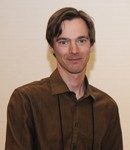 David Shelly has quickly established himself as world leader in observational seismology, having already made a dramatic impact on the field of seismology through his pioneering work to detect and locate deep tectonic tremor. For his work, the Seismological Society of America will honor Shelly with its Charles. F. Richter Early Career Award, which honors outstanding contributions to the goals of the Society by a member early in her or his career.
David Shelly has quickly established himself as world leader in observational seismology, having already made a dramatic impact on the field of seismology through his pioneering work to detect and locate deep tectonic tremor. For his work, the Seismological Society of America will honor Shelly with its Charles. F. Richter Early Career Award, which honors outstanding contributions to the goals of the Society by a member early in her or his career.
While a graduate student at Stanford University, Shelly spent one summer in Japan at the University of Tokyo, where he studied a new class of low frequency earthquakes (LFE), which are tiny earthquakes observed almost exclusively during periods of deep tremor. In a groundbreaking paper published by the journal Nature, he described that the LFEs represented shear slip on the plate interface. In a subsequent paper, also published by Nature, he demonstrated that deep tremor consists of a swarm of LFEs, challenging the prevailing theory that suggested tremor was the signature of fluid movement.
As a Mendenhall Postdoctoral Fellow at the U.S. Geological Survey, Shelly focused his research on tremor under the San Andreas Fault, identifying a streak of low frequency earthquakes on the deep extension of the fault and demonstrating that the recurrence of LFEs changes with time.
His more recent papers have concentrated on the locations, physical mechanism, and temporal patterns of the tremor, which may reveal new information about the behavior of faults.
At the 2012 SSA annual meeting, Shelly discussed a new study that looks at recent earthquake swarms deep below Mammoth Mountain in California that offer a unique chance to see how volcanic processes operate in the Earth’s lower crust.
